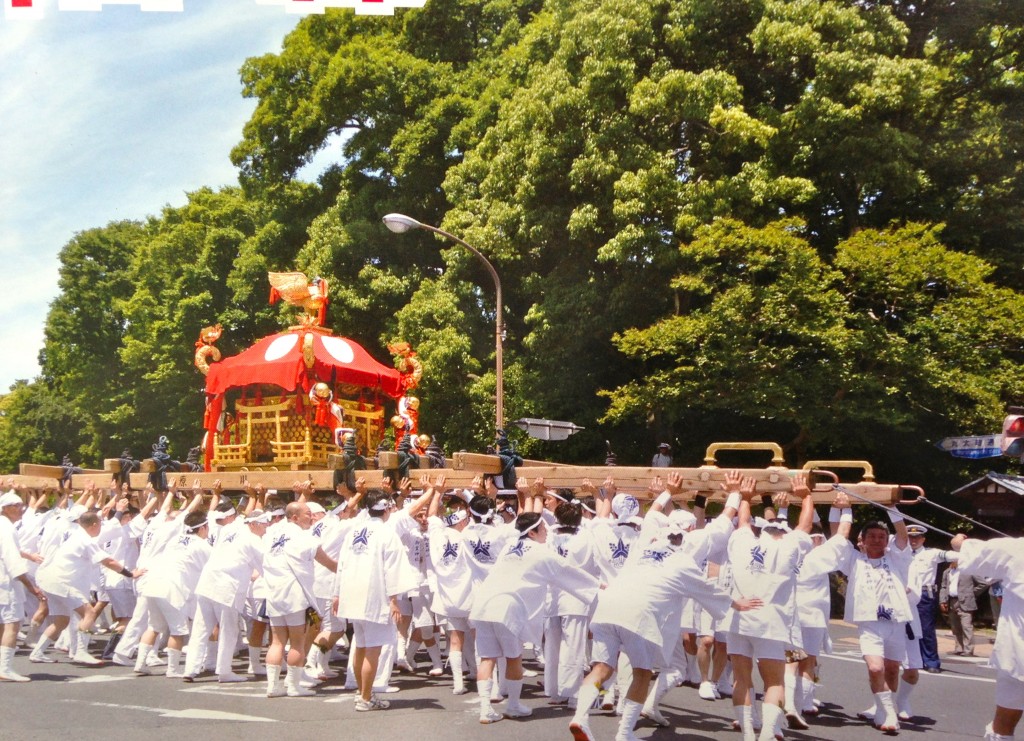
A hundred and fifty pairs of hands help the Shimogoryo mikoshi round the corner of Gosho (Former Imperial Palace). Notice the unusual-shaped bells attached to the beams.
This weekend sees the annual festival of Shimogoryo Shrine, just to the south of the Former Imperial Palace in Kyoto. It’s notable for having eight deified kami, known as the Hassho-goryo (eight angry spirits). Pacifying the spirits of those who died with a grudge was a particular concern of Heian times, with Sugawara no Michizane being the most well-known.
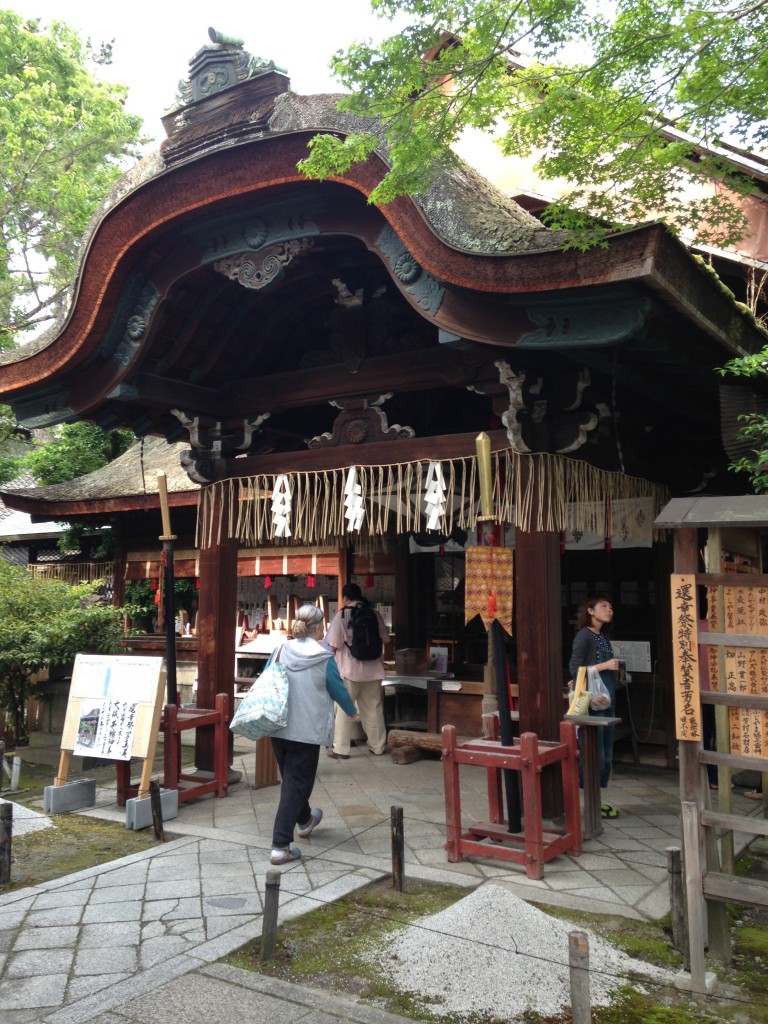
The Honden has a rather fine roof which originated in Gosho (Former Imperial Palace Grounds)
I dropped in at the shrine before the main events to take in some of the atmosphere, and got talking to a couple of parishioners in festive dress. One of them suggested that because people in the past were so preoccupied with angry spirits, they had deified enemies with particular zeal so as to avoid retribution. That explains why so many kami are from Izumo or exiled members of the imperial family.
One of the most striking aspects of the shrine is the discrepancy between its former imperial connections and its present run-down state. This is particularly evident in the contrast between the resplendent mikoshi and the sorry state of the roofs and peeling plasterwork. The parishioners told me that three billion yen was needed to repair the shrine as a whole, but that they had only been able to raise thirty million yen so far.
Normally the city authorities would subsidise the repairs, particularly when it involved an important cultural heritage site such as here, but Kyoto had so many more prestigious shrines to look after that a relatively small shrine like Shimogoryo did not rank high on its priorities. The burden fell on the parishioners, who struggled to cope with the burden. They talked enviously of Shimogamo Shrine’s recourse to building a high-class apartment block on its land.
But the main treasure of the shrine is its mikoshi. Two were on display, one of which weighs a ton and a half. It requires one hundred and fifty stalwarts to carry it around the parish, though there is only room for fifty to carry it at any one time. Two other teams of fifty are needed to stand by and take turns, because of the crushing weight.
Whereas in Kanto the mikoshi is raised straight up and down, in Kansai it was explained to me the mikoshi is raised alternately front and back like a seesaw. And in Shimogoryo’s case, uniquely, it causes a bell to ring – a pacifier no doubt for the angry spirits. As Donald Richie pointed out, the kami at festivals are like wilful babies that need to be jostled around and given constant attention.
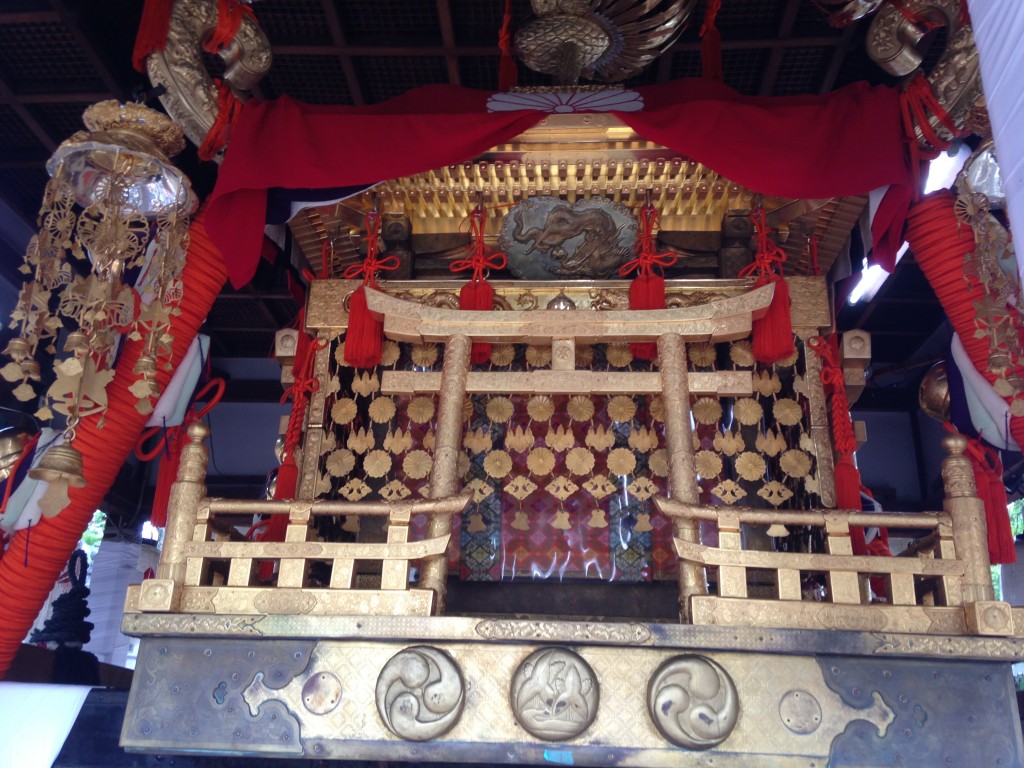
The gorgeous mikoshi contrast with the run-down condition of the shrine.
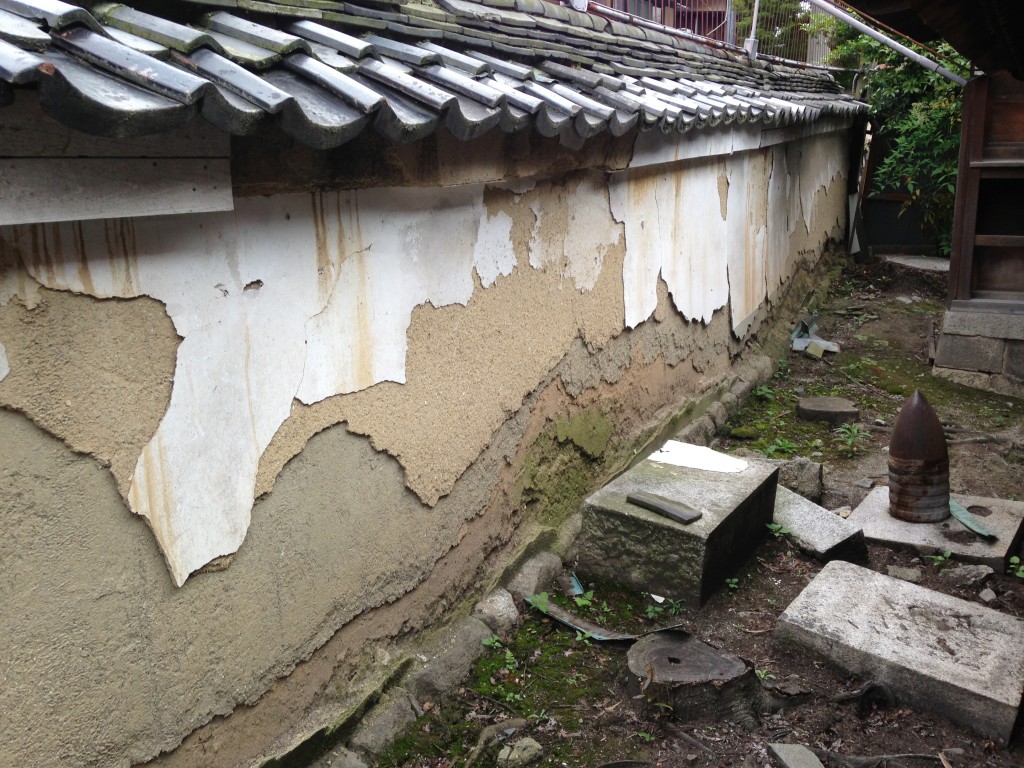
The plaster work on the earthen walls had clearly seen better days.
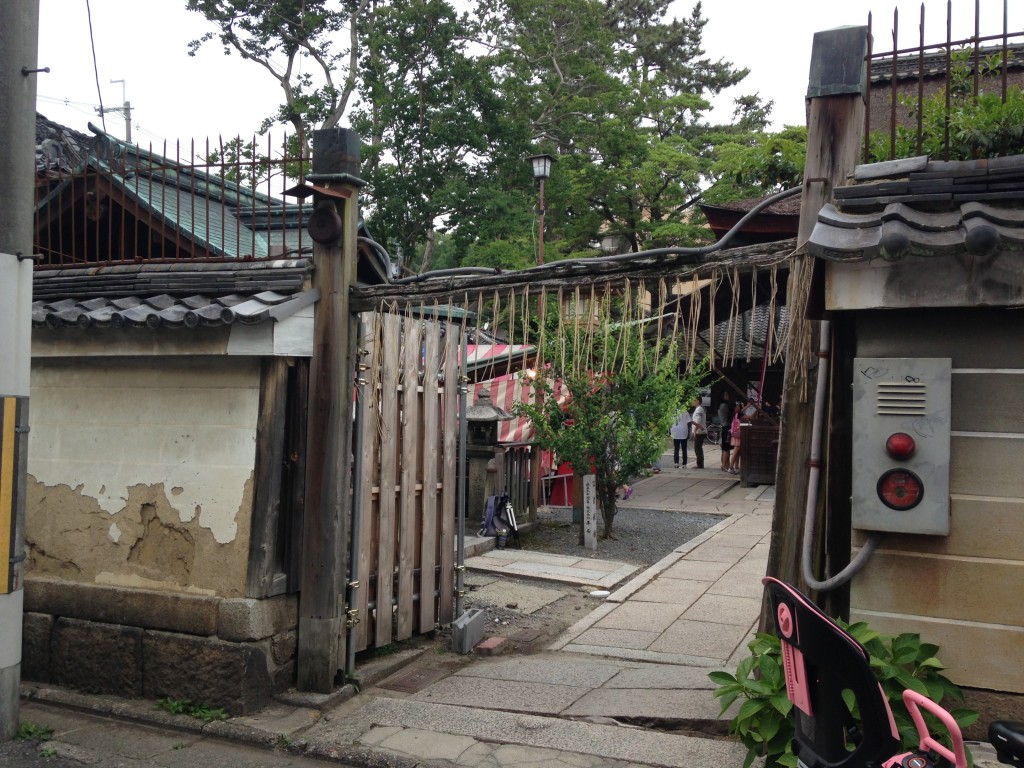
The southern gate hardly presents an auspicious entrance to the shrine…
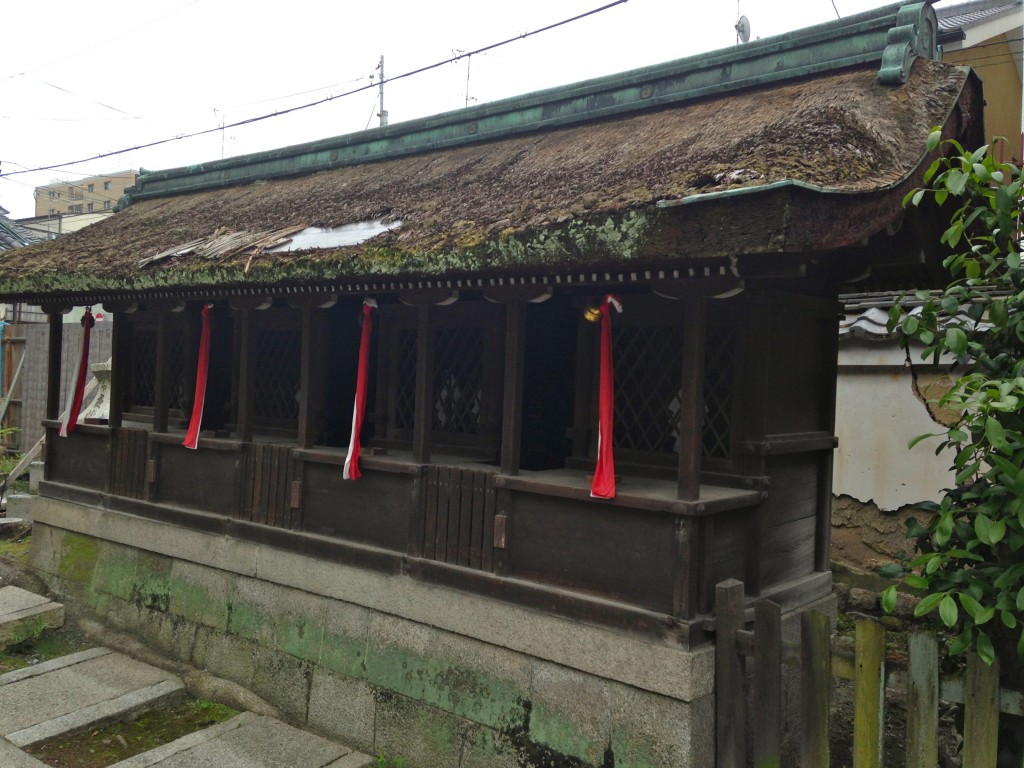
The roof on the subshrines is hardly a mark of respect, but the expense for the handicraft involved is considerable…
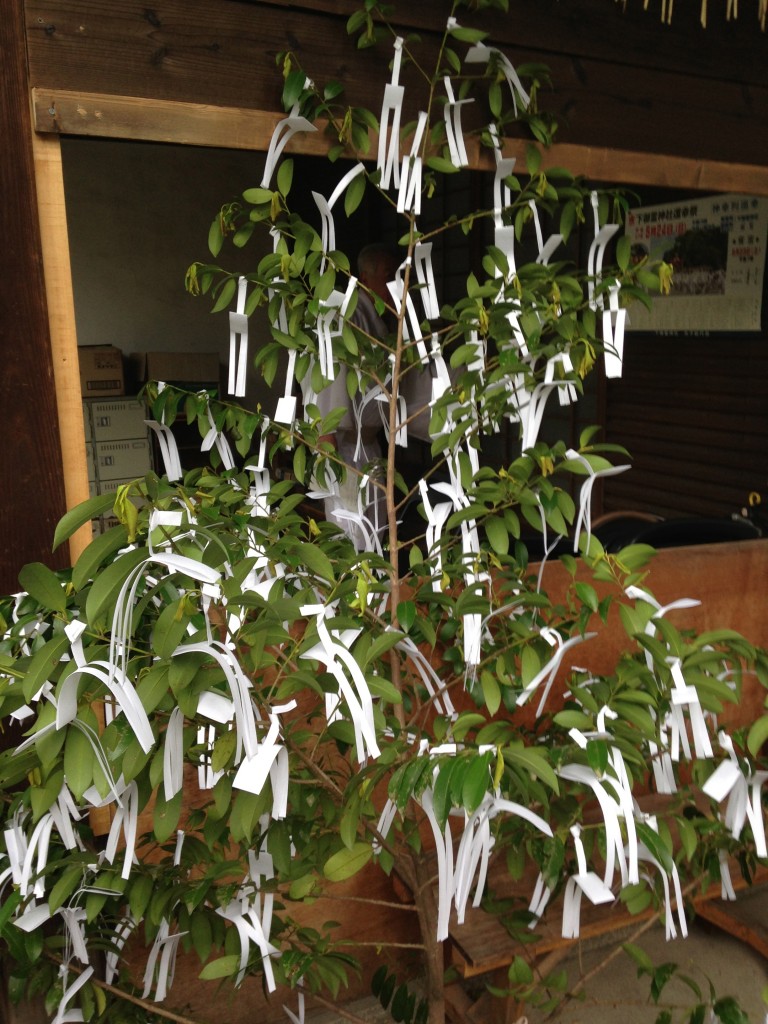
…. but why worry about the fabric of the buildings when you can have such compelling simplicity as this sacred sakaki branch festooned with paper ‘nakatori’.

Leave a Reply